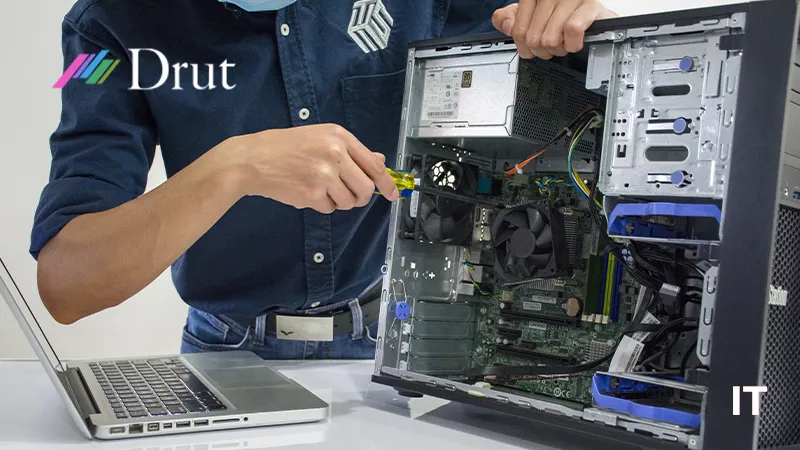Drut Technologies, announced the launch of their DX 3.0 advanced software system, which offers virtual disaggregation for datacenter GPU servers.
Virtual Disaggregation modernizes GPU developments by making it possible to deploy faster, configure easier and finely allocate a precise number of GPUs for the most complex enterprise AI/ML applications.
This software deploys on GPU servers and enables the creation of isolated GPU resource pools within and across distributed physical servers. Servers that do not have enough GPUs can be augmented with GPUs from other servers. Servers that have too many GPUs can be divided into small GPU machines for ML/AI inferencing use cases and dedicated to specific users and workloads.
DX 3.0 is an advanced server software system that incorporates the unified network fabric to deliver what is called a vPOD. A vPOD is a cluster formed by grouping a number of CPU slices, memory slices, OS’s, GPUs and NICs interconnected to form an isolated topology. Once deployed an AI/ML model is used to benchmark and verify the infrastructure. Once verified, it can then be used to deploy a user’s ML/AI model of choice. vPODs can exist within the server and across servers over the network fabric, whether Ethernet, InfiniBand, or using Drut‘s photonic fabric.
Also Read: Auvik Enhances Network Management with New Features
Benefits and Markets:
- Comprehensive Hardware and Software Integration: DX 3.0 offers a complete solution that integrates seamlessly with new and existing server infrastructure, enabling quick and efficient AI model deployment. Customers can use traditional network designs or leverage the benefits of a photonic fabric.
- GPU Isolation – DX 3.0 allows users to run isolated GPU workloads in multi-GPU servers and across separate GPU servers. This capability allows users to dynamically isolate GPUs in multi-GPU servers to create a physically isolated resource group which optimizes utilization, reducing contention and resource stranding.
- Resource Configurability – In a multi-GPU server, DX 3.0 delivers efficient GPU resource utilization by providing the ability to isolate the minimum number of GPUs for a workload, while deploying the remaining GPUs for other workloads. Have an eight GPU server, but only need six GPUs, create three vPODs. One vPOD with six GPUs and two vPODs of one GPU each, to serve more application workloads simultaneously while driving resource utilization to maximum efficiency.
- Flexible Resource Groupings – DX 3.0 provides the ability to carve up multi-GPU servers into smaller machines as well as combine GPUs from physically different machines into a vPOD.
- Compatibility with Off the Shelf Servers: DX 3.0 utilizes standard servers and RDMA-capable NICs, ensuring a high-fidelity GPU utilization without specialized hardware.
- Diurnal Resource Groupings – DX 3.0 delivers the ability to dynamically reconfigure the GPUs for diurnal workloads. GPUs can be configured into a vPOD for a user during the day and redeployed into a different vPOD for overnight workloads. No need to GPUs to be under-utilized at night when users are away.
- Dynamic GPU Allocation: Users can easily add GPUs to their defined vPODs, providing the flexibility to handle a variety of AI workloads.
- Cost Efficiency: By leveraging existing hardware and efficiently optimizing resource allocation, DX 3.0 delivers ML/AI utilization at a significantly lower cost than traditional solutions.
Focused on the rapidly expanding AI infrastructure market, DX 3.0 promises to bring easy to deploy, easy to configure and cost-effective utilization of GPUs for ML/AI workloads. Ideal users are enterprise organizations deploying increasing amounts of GPUs for internal users, GPU as a Service Providers as well as AI as a Service providers needing to deliver fine-tuned GPU instances for customers. Cloud Service Providers (CSPs) deploying GPUs for edge data services will find DX 3.0 useful in allocating GPUs for edge workload demand.
SOURCE: PRNewswire


































